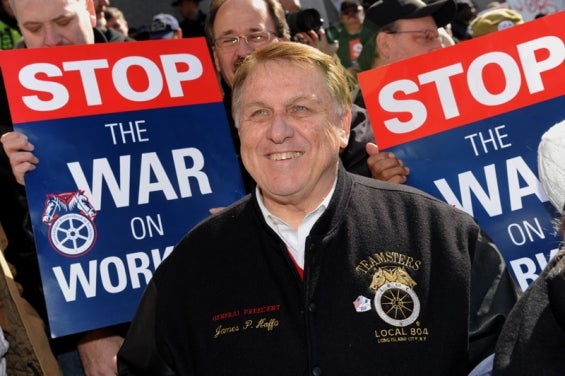Headline News
Hoffa: ‘Walking Man’ Not Alone In His Struggles

By Teamsters General President James P. Hoffa
Published in the Detroit News, February 11, 2015
Sometimes real life can seem like a movie. Such is the case with James Robertson, the 56-year-old Detroit man who walked 21 miles roundtrip to his factory job in Rochester Hills each day after his car died and his job moved further into the suburbs.
The Michigan and even the national media have become enamored with Mr. Robertson’s story, and rightfully so. It is inspirational and a testament to this gentleman’s fortitude. He should be praised for his effort and is more than deserving of the online fundraising campaign created in his behalf that got him a new car and more than $300,000.
But it shouldn’t have to come to this. We should be under no illusions that Mr. Robertson is the only worker facing such challenges in Detroit or the U.S. How is it that we live in a country where hardworking people who toil full-time jobs struggle so much that they must endure ridiculous hardships just to earn a paycheck?
This story, hopefully, will shine a light on the real problems of low-wage workers. Many cannot afford basic transportation to get them to work. While owning a vehicle might not have been a necessity before, a lack of investment in mass transit has caused reductions in service that makes having a vehicle all the more essential. In fact, Mr. Robertson’s long walk to work was necessitated by cuts in bus service in metro Detroit.
Beyond that, however, Michigan and America face a significant income gap, one that has been growing more pronounced between the top one percent and the rest of the workforce. Despite a reduction in the unemployment rate, workers are still struggling. The rich are getting richer, while wages for the poor remain stagnant.
The reason is simple – jobs that paid a fair salary and supported families before the Great Recession have been replaced by those that pay the minimum wage or not much higher. In many cases, people need to work multiple jobs to make ends meet.
As a result, the U.S. is experiencing a significant income inequality problem. A report released late last year by the National Bureau of Economic Research found that wealth inequality has soared in the last three decades, with the top 0.1 percent share of wealth growing from seven percent in 1978 to 22 percent in 2013.
A proven way to level the playing field is to join a union like the Teamsters. The labor movement takes a stand for increased wages, raising the standard of living for hardworking Americans, ensuring quality working conditions and better benefits for workers and their families. And the median union employee makes more than $200 a week more than a non-union one.
We’ve seen how having strong unions helps workers elsewhere. For example, Australia and Canada don’t have such a large wage gap and they have high union density. Where you have strong unions, you have income equality.
The process of getting a fair shot in the workplace can seem infuriating. But the good news is that the public realizes what is going on. A recent poll finds that nearly 90 percent of American voters believe the growing income gap is a significant problem.
Now it is time for those in Lansing and Washington, D.C. to come to the same conclusion and do something about it.